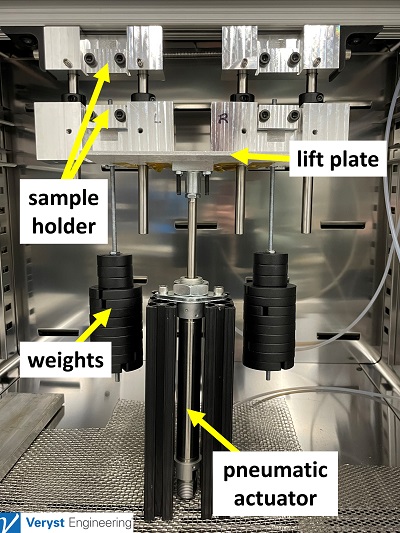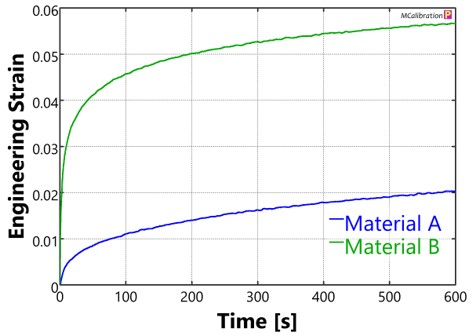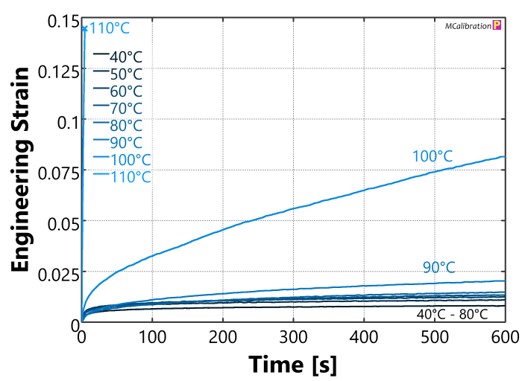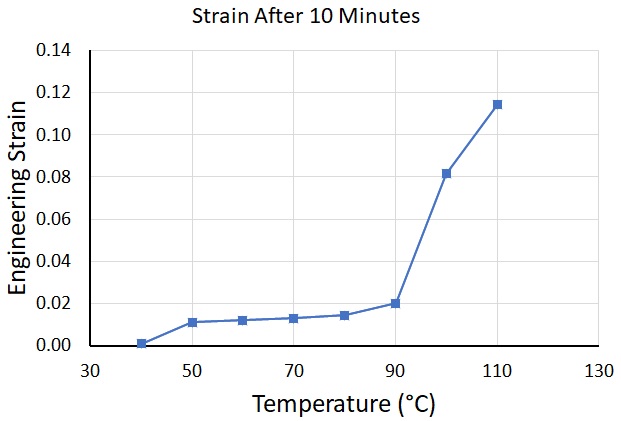Technical Challenge
Polymers are prone to deform slowly over long periods of time when subjected to applied load, a phenomenon known as creep. Over time, the deformation can grow so large that the part no longer functions as intended. This deformation is more pronounced at higher temperatures.
Our client wanted to compare the performance of two polymers utilizing a creep test, to select the material that would be least prone to deformation during high temperature processing conditions.
Veryst Solution
Veryst performed a series of creep tests to compare the creep performance of the two polymers from which the client’s part was made. Veryst developed a creep test fixture (shown in Figure 1) that can be placed in an oven for testing at elevated temperatures. The fixture uses a pneumatic lift to begin the test, so that the temperature can be precisely controlled during testing.
We measure strain during the test with digital image correlation (DIC) through the viewing window of the oven (as shown in Figures 2a and 2b). Digital image correlation is a non-contact full-field strain measurement technique that can accurately measure large deformations at elevated temperatures, even for very soft materials such as plastics.
This fixture can also be used to measure the creep response of materials over longer time frames, from days to weeks. The design allows for multiple specimens to be tested at the same time to reduce total test time.
Creep strains from tests at 90°C show the performance of the client’s two candidate materials in comparison to each other (see Figure 3).
Creep strains for Material A at a wider range of temperatures show that at 90°C, the creep strain increases rapidly (shown in Figure 4 and Figure 5).
Our client used this data to select the appropriate polymer for their device. Additionally, this data was used to set an upper temperature limit specification for the manufacturing process to avoid creep failure during high temperature processing conditions, to ensure stable product performance during manufacturing and produce high-quality reliable products to their customers.



